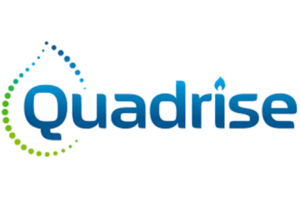The hum beneath oil-scarred decks is shifting, as industry leaders grapple with a pivotal question: how to bridge today’s compliance demands with tomorrow’s zero-carbon promise. A subtle tension is unfolding between the familiar draw of traditional bunkers and the promise of nascent green energy chains, inviting investors to explore pathways that may reshape the economics of global trade from harbour to horizon.
In the near term, shipping’s decarbonisation calculus is playing out in modular, drop-in solutions that sidestep the costly refit of vessels. Water-based emulsion fuels are proving unexpectedly potent in cutting combustion inefficiencies and curbing emissions without dry-docking or rebuilding engine rooms. By blending conventional hydrocarbons with finely dispersed water droplets and proprietary surfactants, these fuels unlock smoother ignition and lower peak temperatures, translating into tangible savings on both fuel and compliance costs. Such innovations arrive at a moment of regulatory inflection, as the International Maritime Organization tightens global fuel standards and regional bodies prepare to penalise certain liquefied natural gas and crop-derived biofuels. For investors, backing ventures that can deliver immediate emissions relief while aligning with regulatory timelines offers a low-risk entrée into the decarbonisation theme.
Beyond these tactical plays, a more strategic contest is emerging over which fuels will underpin a fully decarbonised fleet. Conventional liquefied natural gas, once championed for its modest CO₂ benefits, is showing cracks under scrutiny of methane slip and upstream emissions. Similarly, first-generation biofuels crafted from rapeseed or palm oils are grappling with land-use controversies and food-security trade-offs, while even advanced waste-based biofuels face supply constraints and certification challenges. Their fleeting appeal underscores the peril of premature scale-ups and the risk of stranded investments in assets that fail to meet evolving sustainability criteria.
In place of these stop-gap measures, renewable hydrogen and its derivatives are staking a decisive claim as the cornerstone of a sovereign European shipping strategy. Green hydrogen produced via electrolysis powered by wind and solar not only delivers near-zero lifecycle emissions but also leverages domestic renewables to bolster energy security. When synthesised into ammonia or methanol, this e-fuel family gains the practical advantages of liquid handling, higher energy densities and compatibility with emerging engine technologies. Passenger vessels and ferries may favour e-methanol, while cargo liners could lean into e-ammonia’s cost competitiveness and familiarity within chemical supply chains. Savvy investors are eyeing the build-out of electrolysis capacity, ammonia carriers and port bunkering infrastructure as critical nodes in a value chain set to scale over the coming decade.
Yet the path to a hydrogen-based maritime era is neither immediate nor assured. Engine makers are still refining combustion systems to eliminate nitrous oxide and unburnt ammonia slip, while ammonia’s toxicity profile will demand robust safety protocols. E-methanol, though commercially advanced, hinges on securing sustainable CO₂ feedstocks, an arena where direct air capture will need policy support to achieve the volumes shipping ultimately requires. These technical and regulatory hurdles underscore the importance of targeted public-private partnerships and selective incentives that align risk and return for early movers.
Against this backdrop, ports themselves are transforming into hybrid energy hubs. Onshore power supply installations are proliferating in strategic gateways, affording vessels the option to shut down auxiliary generators and plug into renewables during berthing. Automated terminals and shore-based electrification reduce idling emissions and improve turn-around times, further enhancing operating margins. Investors who position capital behind electrification projects, digital optimisation platforms and shore-power ventures stand to benefit from an accelerating shift towards integrated green hubs.
This deepening interplay between interim emission-cutting fuels, emerging e-fuel ecosystems and port electrification presents a layered opportunity for those seeking long-duration exposure to shipping’s clean transition. Companies offering drop-in emulsion blends anchor the near-term narrative, while developers of electrolysers, ammonia synthesis plants and DAC facilities shape the mid-to-long-term vista. Layered across these themes, digital offerings that harness IoT and AI for route optimisation, predictive maintenance and real-time emissions tracking will amplify efficiency gains and underpin compliance with burgeoning reporting mandates.
While the precise decarbonisation roadmap will vary across regions and vessel types, one theme is clear: the winners will be those who pragmatically bridge today’s regulations with tomorrow’s zero-carbon horizon. For investors, this signals a playbook that combines near-term, modular solutions with strategic bets on renewable fuels and supporting infrastructure. In doing so, it unlocks the potential to not only capture regulatory arbitrage but to shape an energy-secure, low-carbon supply chain that underwrites global trade in the decades ahead.
In summary, the shipping industry is navigating a multi-vector shift from legacy bunkers towards a spectrum of cleaner alternatives, ranging from water-emulsified hydrocarbons to hydrogen-derived e-fuels and electrified ports. Each innovation addresses a distinct phase of the decarbonisation journey, offering investors both immediate returns and foundational positions in a redefined maritime fuel ecosystem.
From modular emulsion fuels to hydrogen-derived e-ammonia, shipping’s clean energy evolution offers investors a layered pathway from rapid compliance gains to long-term decarbonisation value.
Quadrise plc (LON:QED) is an energy technology provider whose solutions enable production of cheaper, cleaner, simpler and safer alternatives to fuel oil and biofuels, proven in real world applications. Quadrise technologies produce transition fuels called MSAR® and bioMSAR™, which allow clients in the shipping, utilities and industrial sectors to reduce carbon emissions whilst also saving costs.











































